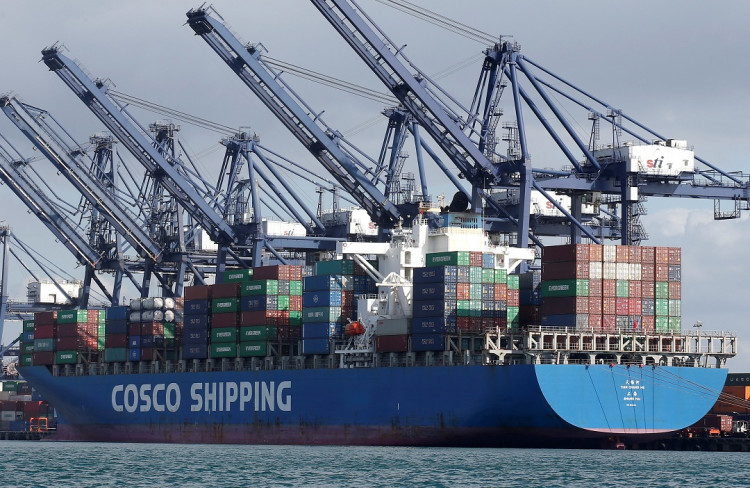The recent spate of Houthi attacks on shipping vessels in the Red Sea is sending shockwaves through the global shipping industry, leading to increased freight costs and significant disruptions in trade routes. These developments have heightened concerns among global economic leaders and port operators, indicating a potential rise in consumer goods prices and a reshaping of international shipping dynamics.
DP World, a major port and freight operator, has voiced concerns over the escalating situation. The company's CFO, Yuvraj Narayan, highlighted the impact on European consumers, stating that the cost of goods from Asia to Europe would be "significantly higher." This sentiment was echoed at the World Economic Forum meeting in Davos, Switzerland, where Narayan predicted that developed economies would feel the brunt of these disruptions more acutely than developing ones.
In a dramatic escalation, a Malta-flagged, Greek-owned bulk carrier, the Zografia, was struck by a missile in the Red Sea, causing material damage but no injuries. The vessel was empty of cargo at the time of the attack and was en route from Vietnam to Israel. This incident has prompted Japanese shipping operator Nippon Yusen and shipping giant Maersk to take precautionary measures, such as rerouting ships and waiting in safer waters.
The attacks, linked to the Iran-allied Houthi militia, have not only affected individual companies but also alarmed major powers. They represent an escalation of regional tensions, with the Houthis expanding their targets to include U.S. ships in retaliation for American and British strikes on their sites in Yemen.
The economic impact of these attacks is becoming increasingly tangible. War risk insurance premiums for shipments through the Red Sea are on the rise, and companies like Michelin are facing operational disruptions due to delays in raw material deliveries. Furthermore, the U.S. Central Command reported that a U.S.-owned commercial vessel, the Gibraltar Eagle, was recently struck by Houthi militants.
The shipping industry, which was already reeling from a slump in 2023, is seeing a spike in freight rates as a result of these disruptions. Container ships are embarking on longer detours around South Africa's Cape of Good Hope, adding up to $10,000 per 40-foot container to shipping costs. This diversion has led to a sharp increase in Asia-Europe rates, with significant implications for the global shipping market. Prior to these attacks, rates had more than halved from 2022, signaling a stark reversal from the pandemic-induced boom.
Alan Baer, CEO of logistics company OL USA, notes that even a continuation of the current situation for a few weeks could add billions to the bottom line of Vessel-Operating Common Carriers (VOCCs), such as Maersk, Evergreen, and COSCO. If the situation persists for several months, it could elevate profits to levels seen during the 2021 and 2022 chaos.
The global shipping industry, however, is still grappling with the aftermath of a downturn caused by high inventories and a pullback in consumer spending. The industry's net income plummeted by 95.6% year on year to $2.6 billion in the third quarter of 2023. The recent hikes in freight rates, though unlikely to restore the sector to its pandemic-era glory, are expected to boost profitability substantially.
ING's Senior Economist Nico Luman and brokerage Jefferies have predicted a recovery in container liner profitability, with Jefferies significantly raising its 2024 earnings forecasts for several shipping giants. This optimism is contingent on various factors, including the Federal Reserve's monetary policy and geopolitical stability.
The Red Sea attacks and subsequent rerouting of vessels represent more than just a regional issue. They have global ramifications, affecting everything from insurance premiums and operational costs to broader economic indicators like inflation and consumer prices. The situation underscores the vulnerability of global supply chains to geopolitical events and highlights the need for increased maritime security and strategic flexibility in shipping operations.
As the world watches the unfolding situation in the Red Sea, the shipping industry braces for a potentially transformative period. The impact of these disruptions will be felt across various sectors, emphasizing the interconnected nature of global trade and the importance of maintaining stable and secure maritime routes.






